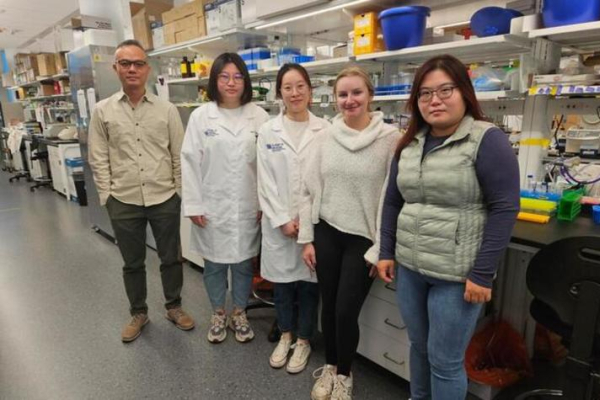From student to scientist: tackling flooding in Eastern Kentucky

Growing up in a military family meant frequent moves for Meredith Swallom. But one state eventually stood out.
“Kentucky is the only place that ever really felt like home,” Swallom said. She has been a geologist with Kentucky Geological Survey (KGS) since 2022. “There’s just something about the mix — beautiful seasonal changes, moderately-sized cities with plenty of coffee shops, easy access to the outdoors and that classic small-town politeness.”
Swallom’s path into geology was driven by a lifelong love of science, but it was the University of Kentucky that gave her direction.
“UK recruiters went out of their way to connect me to the geology department,” Swallom said. “As an undergrad, I was so supported by faculty that I couldn’t be convinced to do my master’s degree anywhere else.”
After earning her master’s, Swallom was recruited by UK alum Tom Spalding and worked at Pioneer Natural Resources in Irving, Texas, for two years. Although the work was exciting, Swallom missed Kentucky and wanted to do research that had a broader impact.
Returning to UK for her doctorate and joining KGS full-time in 2022 turned out to be the perfect fit.
“It allowed me to come home and do meaningful science,” Swallom said.
One area where Swallom is making a difference is in flood resilience research. In Eastern Kentucky, where steep terrain, changing land use and intense storms combine with devastating results, flooding is an urgent issue. After the catastrophic July 2022 flooding, Swallom built a detailed flood model to investigate how land changes and land use may have contributed to flooding, focusing her research on Letcher County, Kentucky.
“One of our goals at KGS is to support scientists like Meredith who are passionate about using research to serve the public good,” said Michael McGlue, Ph.D., Alumni Endowed Professor and KGS director. “Her research on flooding is a perfect fit for that mission.”
Swallom’s work centers on how two key factors, soil infiltration rates and surface roughness, impact water’s movement across the landscape. These values help geologists model what happens during extreme rainfall events.
Infiltration rate measures how much water the ground can absorb. High infiltration helps reduce flooding by soaking up rain. Compacted or bare surfaces, like those found in urban areas or developed sites, have much lower infiltration and contribute to water runoff.
Surface roughness is important because the smoother the surface, the faster water can flow across it. Smoother materials like water, concrete, bare rock or soil have lower roughness values than surfaces covered in vegetation.
Swallom’s flood model divided Letcher County into 5-meter pixels, each assigned a roughness value and infiltration rate based on land cover: urban areas, bare slopes, bare floodplains, mountaintop removal mines, shrublands and forests. Areas with low infiltration and low roughness, like developed sites and roads, generated more runoff.
Swallom discovered that channel narrowing — the gradual reduction of river capacity over time from agricultural or building development — was a major driver of flood height. Once runoff reached river channels, it could not efficiently move downstream. Narrowed channels surrounded by rough, vegetated floodplain reduced the system’s ability to move water downstream efficiently, causing water levels to rise.
Swallom assigned lower infiltration values across the board to match the observed flood behavior, even for areas with soil types that typically allow more water absorption. The rainfall in Letcher County in July 2022, as much as 10 inches in a 24-hour period, was preceded by a smaller storm earlier that week.
“The soil was already saturated when the major storm began. The landscape’s natural ability to absorb water was overwhelmed and water would have been flowing quickly downhill, almost immediately,” Swallom said.
Flooding is the result of a complex web of interactions between geology, hydrology, land use and weather.
“There’s not always a clear-cut answer in science,” Swallom said. “But modeling helps us understand the roles different factors play and that brings us closer to identifying how we can prepare for or mitigate future disasters.”
“Flooding in Eastern Kentucky is a complex problem that involves not only weather, but also land use, soil and terrain,” McGlue said. “Though there’s still more research to be done, Meredith’s model gives us more pieces to this puzzle and helps us picture how they interact.”
You can access Swallom’s research article in Geomorphology here.
This material is based upon work supported by the U.S. National Science Foundation under Cooperative Agreement No. 2344533 and Award No. 2242120. Any opinions, findings, and conclusions or recommendations expressed in this material are those of the author(s) and do not necessarily reflect the views of the National Science Foundation.

